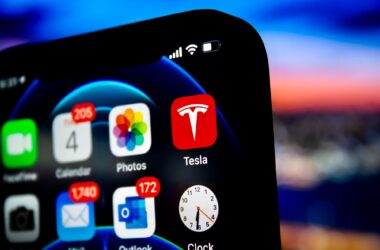Introduction:
In today’s fast-paced world, connectivity plays a crucial role in driving innovation, communication, and progress. The advent of 5G technology has created a significant buzz across industries, promising to revolutionize the way we connect, communicate, and interact. With its lightning-fast speeds, ultra-low latency, and massive device connectivity, 5G is poised to transform various sectors and empower a new era of technological advancements. In this blog post, we will delve into the intricacies of 5G technology, exploring its capabilities, benefits, and potential applications.
Understanding 5G Technology:
Evolution from previous generations:
5G technology is the fifth generation of wireless communication, succeeding its predecessor, 4G. It builds upon the foundations of 4G by introducing several technological advancements, including higher data rates, increased capacity, and lower latency.
Key technical aspects:
5G utilizes advanced techniques such as millimeter-wave frequencies, massive MIMO (Multiple Input Multiple Output), beamforming, and network slicing to deliver enhanced performance.
Spectrum allocation:
The implementation of 5G technology involves utilizing various frequency bands, including low-band, mid-band, and high-band (mmWave). Each band offers a unique balance between coverage area and data capacity.
Advantages of 5G Technology:
Lightning-fast speeds:
5G technology offers remarkable download and upload speeds, potentially reaching up to 20 Gbps. This tremendous increase in speed enables quick and seamless access to data, multimedia content, and applications.
Ultra-low latency:
With latency as low as 1 millisecond, 5G ensures near-instantaneous responsiveness. This low latency is critical for applications such as real-time gaming, autonomous vehicles, remote surgery, and industrial automation.
Increased device connectivity:
5G networks can support a massive number of connected devices simultaneously. This capability is vital for the Internet of Things (IoT) ecosystem, enabling seamless communication between countless devices and facilitating smart cities, smart homes, and industrial IoT deployments.
Enhanced reliability and efficiency:
5G offers improved network reliability, minimizing downtime and ensuring consistent connectivity. Additionally, it provides more efficient use of spectrum resources, optimizing the overall network performance.
Potential Applications of 5G Technology:
Smart cities:
5G enables the development of smart cities by connecting various components such as traffic systems, public safety networks, energy grids, and environmental sensors. This connectivity allows for real-time data analysis and efficient management of urban infrastructure.
Healthcare:
The low latency and high reliability of 5G are instrumental in transforming the healthcare industry. It facilitates telemedicine, remote patient monitoring, and enables healthcare professionals to perform surgeries with the assistance of robots remotely.
Autonomous vehicles:
5G networks enable the seamless communication required for autonomous vehicles, ensuring real-time updates, precise positioning, and enhanced safety on the roads.
Manufacturing and Industry 4.0:
With its high capacity and low latency, 5G technology revolutionizes manufacturing processes by enabling real-time monitoring, predictive maintenance, and robotics automation, leading to increased productivity and efficiency.
Entertainment and immersive experiences:
5G facilitates the delivery of immersive and high-definition content such as virtual reality (VR) and augmented reality (AR), transforming the entertainment industry and providing users with engaging experiences.
Challenges and Future Developments:
Infrastructure deployment:
Implementing 5G technology requires a significant investment in infrastructure, including the installation of new base stations and small cells. This extensive infrastructure deployment may lead to increased construction and visual clutter in urban areas.
Limited coverage and signal penetration:
The higher frequency bands used in 5G, particularly the millimeter-wave (mmWave) spectrum, have limited coverage compared to lower frequency bands. Additionally, the higher frequencies have reduced signal penetration capabilities, which means obstacles such as buildings and vegetation can significantly impact signal strength and coverage.
Spectrum availability:
Allocating sufficient spectrum for 5G networks can be a challenge due to the limited availability of suitable frequency bands. This issue may result in congestion and reduced network performance in areas with high user density.
Security and privacy risks:
With the increase in connected devices and data transmission, there is a heightened risk of cybersecurity threats. Protecting sensitive data and ensuring network security becomes crucial in 5G networks. Additionally, the massive amount of data collected by 5G devices and infrastructure raises privacy concerns that need to be addressed.
Potential health concerns:
Some individuals and groups have expressed concerns regarding potential health effects of prolonged exposure to electromagnetic radiation emitted by 5G infrastructure and devices. However, extensive scientific studies conducted by regulatory bodies such as the World Health Organization (WHO) have not provided conclusive evidence of any significant adverse health effects from 5G.
Cost implications:
The implementation of 5G technology involves significant investments for both service providers and consumers. Upgrading existing devices to 5G-compatible ones, acquiring new infrastructure, and deploying network enhancements can result in increased costs for network operators, which may eventually be passed on to consumers.
Conclusion:
5G technology represents a transformative leap in connectivity, promising faster speeds, lower latency, and unparalleled device connectivity. Its potential applications span various industries, revolutionizing sectors such as healthcare, transportation, manufacturing, and entertainment. While challenges in infrastructure deployment and security exist, the ongoing development and advancements in 5G technology will continue to unlock new opportunities and drive innovation across the globe. As we embrace the power of 5G, we embark on a journey toward a hyper-connected future, where the possibilities are limitless.
Please let us know what you think about this technology in the comment below. Thank you!









